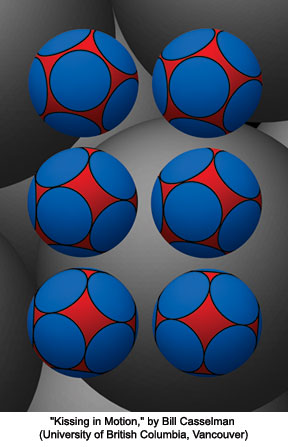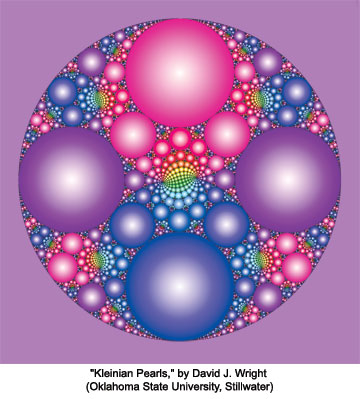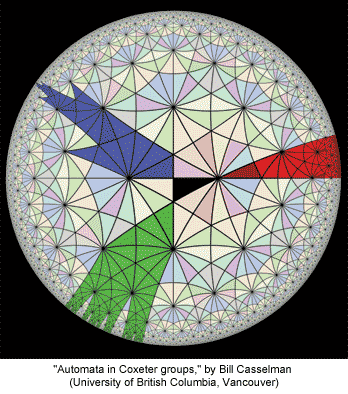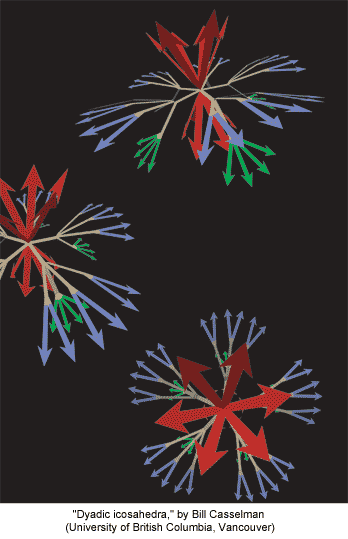
Mathematical ImageryMathematical artists create strong, stunning works in all media and explore the visualization of mathematics
Notices of the American Mathematical Society: Cover Art
Notices of the AMS, the Society's member journal of record, has had some stunning covers over the years. Here is just a sampling.

"Kissing in Motion" shows the motion of the "shadows" of kissing spheres in a deformation pointed out by J.H. Conway and N.J.A. Sloane, following an observation of H.S.M. Coxeter. The sequence is left-right, right-left, left-right (sometimes called boustrophedon). The image accompanies "Kissing Numbers, Sphere Packings, and Some Unexpected Proofs," by Florian Pfender and Günter M. Ziegler (Notices of the AMS, September 2004, p. 873). - Bill Casselman

People have long been fascinated with repeated patterns that display a rich collection of symmetries. The discovery of hyperbolic geometries in the nineteenth century revealed a far greater wealth of patterns, some popularized by Dutch artist M. C. Escher in his Circle Limit series of works. This cover illustration portrays a pattern which is symmetric under a group generated by two Möbius transformations. These are not distance-preserving, but they do preserve angles between curves and they map circles to circles. The image accompanies "Double Cusp Group," by David J. Wright (Notices of the AMS, December 2004, p. 1322). - Bill Casselman

This image illustrates two types of infinite Coxeter groups and algorithms involved in computation within those groups: one which generates elements of the group one by one, the "Shortlex automaton," and others, more conjectural, which seem to describe the Kazhdan-Lusztig cells of an arbitrary Coxeter group. The illustration is described in detail and was created to accompany the article "Cells in Coxeter Groups," by Paul E. Gunnells (Notices of the AMS, May 2006, p. 528). The explicit finite state machines required to draw the Kazhdan-Lusztig cells were supplied by Gunnells. - Bill Casselman

This image exhibits fanciful renderings of the dyadic icosahedra discussed in the article "The p-adic Icosahedron," by Gunther Cornelissen and Fumiharu Kato (Notices of the AMS, August 2005, p. 720). - Bill Casselman


